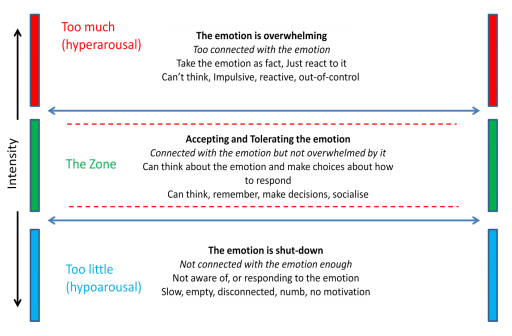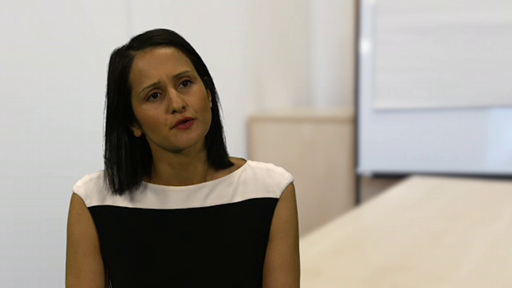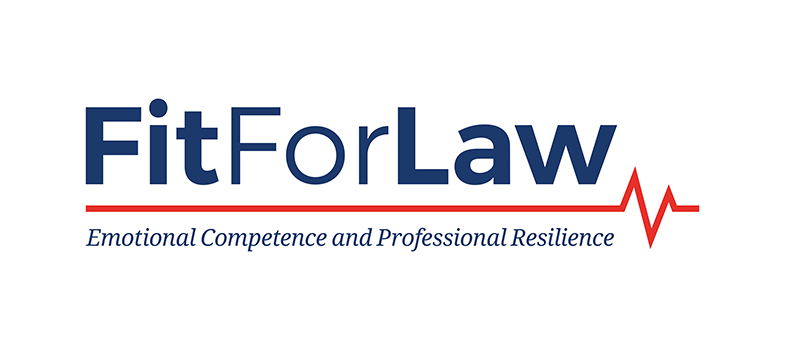2.2 Incorporating and regulating different emotions
This section includes:
- Explanatory text
- Checklist for “Utilising emotions”
- 2 videos.
You should allow yourself 20 minutes to complete this section.
Once you can identify and understand the emotions you are experiencing, the next step is to utilise these skills in the way you work. A common misconception about emotions amongst legal practitioners is that, if you admit to having emotions, they will all come flooding out (a sort of variation on the floodgates argument often found in tort!). This isn’t the case. Your emotions are there whether you acknowledge them or not, but spending more time identifying and understanding them, and their impact on your work, will actually help you to regulate them more appropriately. This video gives some examples of how individual legal professionals have found emotional competence helpful to them.
Using emotions appropriately

Transcript
By regulating our emotional responses, we mean managing them in a way which ensures they remain within an appropriate zone or window of tolerance without becoming too intense and over-whelming (known as dyscontrol or hyperarousal), but also without seeking to suppress or ignore them (known as dissociation or hypoarousal). It is the latter that the culture of legal practice sometimes seems to promote.

Take five minutes to look back at the example you selected in Activity 1. You may be able to think of ways in which you could have regulated your emotional responses in the scenario to handle it more effectively or healthily. For example, if you had thought about a client interview and identified that you had found it difficult because the client had seemed uncomfortable and unable to explain their position clearly, you might find it useful to think about what emotional cues you presented to them in your speech and body language and whether you had made any effort to empathise with their situation.
The following diagram provides a useful checklist for considering how to incorporate and regulate emotions, but you may wish to adapt it to suit your own legal workplace and ways of practicing.
Utilising emotions
- WHO? Who is involved in this situation and what are everyone’s (particularly your own) emotional responses?
- WHY? Why am I having this emotional response?
- WHAT? What could this emotional response tell me about this situation and my reaction?
- HOW? Are there any ways I should modify my behaviour or approach based on this emotional response? What can I do next time to avoid having a negative response?
If you run through this checklist regularly, you may begin to see that there are key patterns or themes that emerge. For example, some legal practitioners report that they find time management challenging. This can lead to feelings of stress and anxiety, which in turn may regularly influence the emotions they experience in a range of different workplace situations (the type of “incidental emotion” referred to above).
If you do identify any key themes or patterns, then there is a need to address these to enable you to regulate your emotional responses more effectively and focus on working with your valuable, integral emotions. In other words, you need to explore the root cause of your reaction. For example, in the case of time management, it may be that there is a need to discuss reallocating some of your work load, or that you need further administrative assistance, or that you need to take other practical steps (such as using a more effective reminder system to help you prioritise) to alleviate the issue and avoid it skewing your emotions in an unhelpful way.
Alongside considering your emotional responses, it is also valid (in fact, important) to consider your own emotional wellbeing, and that of others involved in the situation. If you are finding yourself or those around you increasingly pushed out of the zone of tolerance, this is something you need to address. This will be discussed further in section 4.
This video of occupational psychologist, Dr Rajvinder Samra,explains more about incorporating and regulating emotions in the workplace.
Regulating emotions in the workplace

Transcript
2.1.1 Some practical tips
